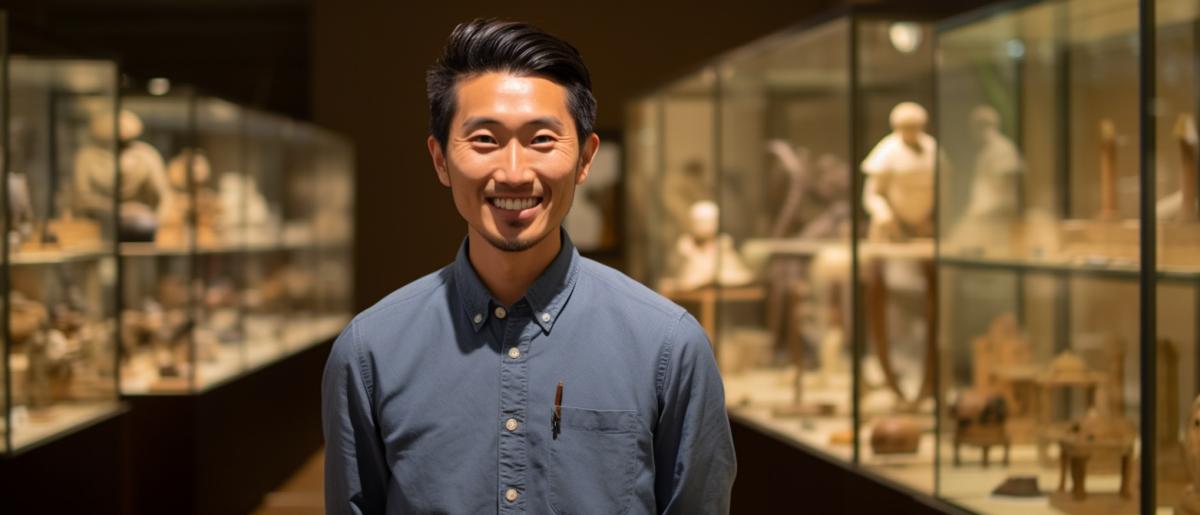

Stepping into a museum is a fascination. Time stands still and historey whispers into our ears. Museum Operators in Australia play a crucial role in curating this magic, attracting thousands of visitors each year. Their mission, however, is often challenged by economic pressures. Upkeep for such establishments, especially independent ones, can be thick on the wallet. Business loans serve as an apt choice for Museum Operators in Australia. They allow them to preserve the essence of artefacts, improve visitor services and expand exhibits. Moreover, a healthy infusion of finance helps in overcoming spontaneous costs and other pressing budget issues. By considering a business loan, Museum Operators are essentially investing in the future - nurturing Australia's vibrant culture while fostering a thriving business. While the world of loans can appear rather daunting, one should not be deterred. The tailored options for Museum Operators not only offer monetary assistance but support growth strategies too. Business loans equip them with necessary capital, enabling them to conserve culture magnificently, now and for generations to come. The valuable artforms they protect and the joy they bring to patrons - all are beautifully streamlined by these financial aids.
Compare over 40+ lenders with one application.
Museums often serve as cultural pillars, dynamically displaying the shared historey, artistry, and innovation that have shaped society. Museum operators in Australia play a vital role in this cultural dialogueue, acting as stewards of Australia's rich and diverse heritage. They bottle up snippets of time, preserving them for future generations. From housing Indigenous art, colonial historey, to scientific breakthroughs, museum operators ensure these collections are maintained, interpreted, and made accessible to the public. The work of museum operators extends beyond mere preservation — they create engaging interactive exhibits that bring historey, art, and science to life. By doing so, they foster a community's learning and understanding of its own cultural identity. Museum operators also contribute significantly to Australia's economy. Museums are major tourist attractions, drawing millions of local and international visitors annually, stimulating local economies and generating revenue. They also provide employment opportunities and drive demand across various sectors, from catering to security. Furthermore, operators ensure museums carry out research and educational initiatives, partnering with schools and universities to drive academic research and inspire future generations in the arts, historey, and sciences. Therefore, the work of museum operators in Australia goes beyond the walls of these establishments. They contribute to community identity, economic growth, research, and education - making them an irreplaceable element of Australian society.
Learn about eligibility and how to apply.
Museum operators in Australia face a unique set of challenges that distinguish them from other business entities. Economic conditions, fluctuating tourist footfall, and sometimes, shifting cultural values, play a pivotal role in determining the sustainability of these vital community institutions. One of the main issues that museum operators encounter has to do with funding. State funding is often insufficient, and seeking donations or grants can be a competitive and demanding process. Without adequate funding, maintaining the upkeep of exhibits, investing in technology for interactive displays, and even employing skilled staff can be challenging. In addition, Australian museum operators also grapple with the issue of fluctuating visitor numbers. Aside from special exhibits or events, museums tend to see an ebb and flow in their visitor counts, primarily driven by the tourist seasons. As such, earnings can be unpredictable, making budget planning difficult. Let's also not forget the less tangible, but equally pressing challenge of remaining relevant and engaging to a diverse and ever-changing audience. Museums are no longer passive venues where exhibits are merely beheld; modern museum-goers seek immersive, interactive experiences that require innovative ideas and, of course, additional investment. Further, the recent COVID-19 pandemic has presented unexpected hurdles, necessitating immediate adjustments to comply with health regulations while still providing an enriching experience to visitors. Thus, it's evident that navigating this landscape of financial constraints and sector-specific challenges can be tricky for museum operators, and a business loan might be the lifeline needed to boost operations, adapt, and ultimately thrive.
Calculate your repayment estimates and more.
When it comes to overcoming challenges unique to running a museum, business loans unravel a wealth of opportunities. Financial injections offer an immediate solution to unforeseen expenses that may arise, such as urgent repairs to the storing facilities or investing in top-tier security to guard historical artefacts. A financing arrangement empowers museum operators to meet such pressing needs promptly without having to compromise on their core operations, ensuring they can sustain the captivating exhibitions that engage visitors and underpin their revenue stream. Further, reinventing a museum's experience to keep pace with dynamic visitor preferences can be capital-intensive. Interactive displays, virtual reality explorations, and digitisation of collections to widen access through online platforms might all seem beyond reach. But with a business loan, a museum operator can transform such visionary concepts into reality. In essence, business loans fund the cultivation of innovative guest experiences, boosting footfall and online visits, thereby increasing income. Lastly, growth and expansion is a critical element, even for museum operators. Here, too, business loans come into the picture, enabling the acquisition of new exhibits, expanding into larger premises, or even setting up branches in other locations. Simply put, business loans pave the way for museums to increase their cultural offering, reach larger audiences, and reinforce their relevance in a fast-paced world. Thus, business loans aren't merely a means to an end. Instead, they're a strategic tool enabling museums to flourish.
Museum Operators in Australia can access several business loan types to enhance their operations. These include term loans, which provide a lump sum to be repaid over time. Line-of-credit loans offer flexibility by allowing museum operators to borrow amounts up to a pre-set limit when needed, while equipment finance caters specifically for the purchase of new, specialised equipment.
There are several types of business loans in Australia that can benefit Museum Operators. Each of these loan types has its unique features, advantages, and potential disadvantages. Here are some of the most common types of business loans for Museum Operators:
Secured Business Loan
These loans are furnished when the borrower provides assets, such as real estate or equipment, as collateral. Especially beneficial when you wish to invest in new exhibits or infrastructural modifications while leveraging existing assets.
Unsecured Business Loan
Not requiring any collateral, these options are ideal if you don't want to risk your tangible assets. They suit smaller scale expenses, ranging from designing new promotional material to smaller infrastructural adjustments.
Line of Credit
A flexible borrowing option granting the ability to draw upon funds as needed. Opt for this when continuous expenses like operational overheads, salaries, or seasonal ebb and flows in visitor are expected.
Commercial Property Loan
Customarily used for acquiring, upgrading or extending commercial property. If it's time to move your museum into a larger facility or augment the existing property, this is what you procure.
Equipment Loan
Designated for buying essential assets like artefacts, display counters, or advanced audio-visual equipment. It's an investment for your museum's aaesthetic appeal and operational metrics.
Overdraft Facility
Provided by your bank, an overdraft can accommodate short-term cash flow needs or unanticipated expenses. This is your contingency plan for unexpected outlays, be it due to a unplanned refurbishments or credit card chargebacks.
Merchant Cash Advances
Based on future earnings, these advances could help meet immediate fund requirements. Choose this for quick acquisitions or bridge recurrent cash shortages.
Invoice Financing
An approach to fund your business using outstanding invoices. If your museum relies heavily on bulk school or group bookings, leveraging unpaid invoices can sustain cash liquidity.
Trade Finance
It assists in managing the cost of inventory. Opt for this when planning international exhibit exchanges or curating rare exhibits from overseas.
Franchise Loan
Primarily for those who are running a museum under a franchise agreement. If your next strategy involves partnering with a global brand, this loan can provide the necessary push.
Business loans can provide considerable assistance for museum operators to enhance exhibitions, diversify their collections or carry out critical infrastructure upgrade. With the flexibility of lending options, they can be tailored to suit ongoing operational costs or one-off projects - ultimately enriching visitor experience.
Here are some common reasons Museum Operators use business loans:
Exhibition Upgrades
With the aid of a tailored business loan, Museum Operators may have the financial support to bring in new, intriguing items to contribute to their exhibit collections, including rare, hard-to-find artefacts or popular travelling exhibits.
Digitalisation Projects
Loans can help fund important digitalisation projects, enlacing technology into the museum experience. This includes creating interactive digital displays or implementing modern ticketing systems for enhanced visitor engagement.
Building Renovations
To keep the structures safe and appealing, business loans can fund essential building renovations and upgrades, which can range from minor improvements to significant structural overhauls.
Educational Programmes
Museums are fundamental education centres. Business loans could fund the development of unique educational programmes, workshops, and partnerships with local schools, inspiring the next generation of historey enthusiasts.
Marketing and Outreach
To draw a larger audience, it's essential to invest in effective marketing strategies. A business loan can empower museums to explore innovative marketing and outreach initiatives.
Debt Refinancing
Museum Operators can use business loans to refinance existing, high-interest debt, potentially saving thousands in interest payments over the course of the loan.
Inventory Management
Business loans can support the cost of managing and maintaining the museum's inventory of irreplaceable artefacts including costs for insurance, preservation, and archival storage.
Staff Training
Quality staff are the backbone of successful museums. Business loans could go towards comprehensive staff training programmes that bolster customer service and visitor interaction.
Security Enhancements
The importance of security in museums cannot be overstated. Business loans can fund upgrades to advanced security systems, protecting valuable exhibits and providing peace of mind for staff and visitors.
Accessibility Upgrades
Ensuring the museum is accessible to all individuals, regardless of physical ability, is a top priority. Business loans may provide necessary funding for ramps, lifts, or other accessibility improvements.
To estimate your monthly repayments and the total cost of the loan, input the loan amount, loan term and interest rate into the calculator below. This helps you plan your budget and choose the most suitable loan terms.
These helpful FAQs will help you find the answers you need. If you can't find what you're looking for, you can request a callback below.